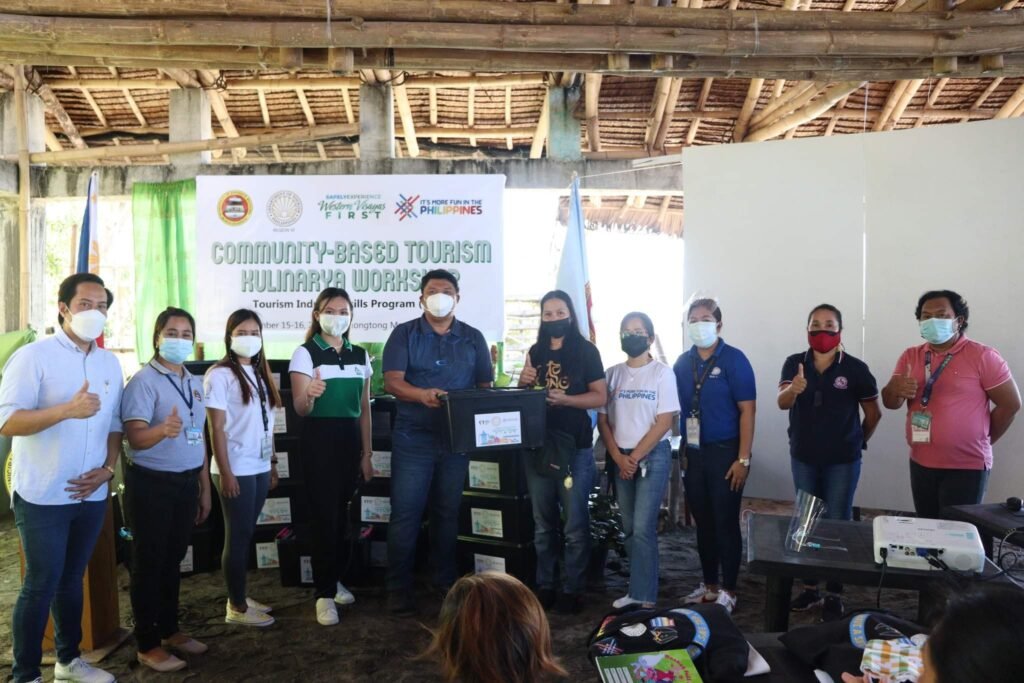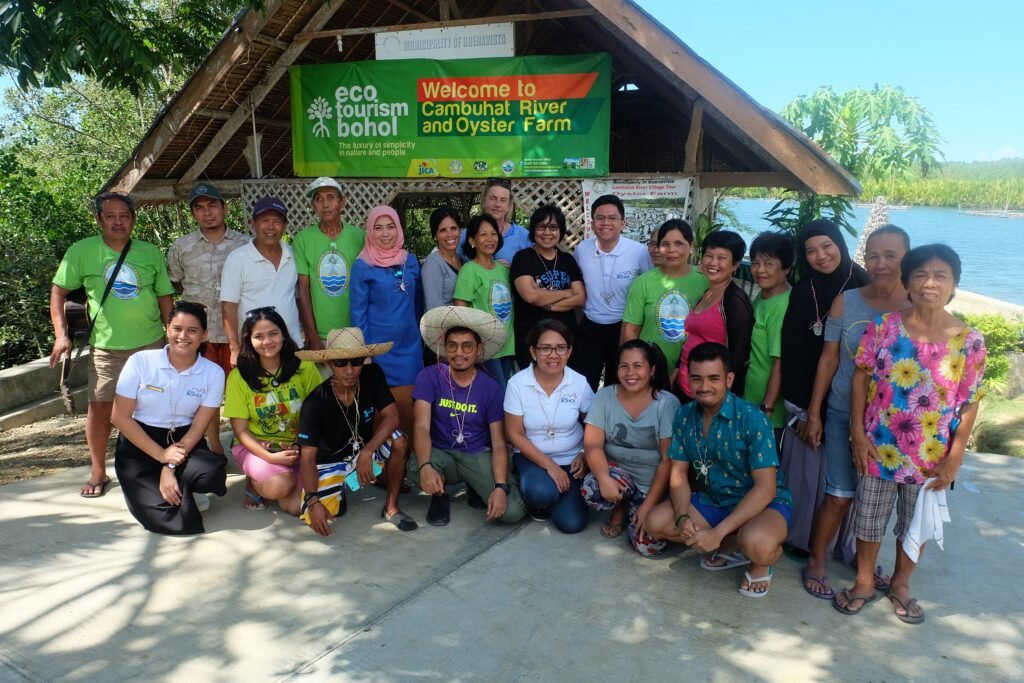Community-based tourism is a prevalent model in developing nations like the Philippines, where local communities actively engage in the tourism development process.
In various regions of the Philippines, the involvement of local communities in tourism is a common practice.
Community-based tourism in the Philippines is a growing sector that empowers local communities and promotes sustainable travel.
This model of tourism enables the preservation of cultural heritage and natural resources while simultaneously driving local economies.
Tourists have the opportunity to stay with local families, experience traditional customs and activities, and explore stunning landscapes.
This immersive experience fosters a deeper understanding and respect for the local culture and environment, offering a tourism model that benefits both visitors and hosts.
Introduction
Community-based tourism (CBT) is a sustainable and responsible approach to tourism that empowers local communities while offering travelers an authentic cultural experience.
In the Philippines, CBT has gained recognition and popularity, providing an opportunity for travelers to engage with diverse cultures and landscapes while contributing to local development.
This comprehensive guide explores the concept of community-based tourism in the Philippines, its principles, benefits, challenges, and how it is helping preserve the nation’s rich cultural and natural heritage.

1. Understanding Community-Based Tourism (CBT)
Community-based tourism (CBT) is a practice where local communities invite tourists to visit their communities, offering unique, community-based tourism in the Philippines immersive experience.
The locals provide accommodation, food, and activities that are authentic and indigenous to their culture.
The revenue earned from these engagements is utilized for community welfare and development. It not only benefits the locals economically but also encourages the preservation of their culture and environment, making CBT a sustainable tourism model.
a. Definition of CBT
- CBT is a form of tourism that emphasizes community participation, community-based tourism in the Philippines, local decision-making, and the equitable distribution of benefits. It encourages tourists to engage with the culture, traditions, and daily lives of local communities.
b. Principles of CBT
- Main Points:
- Sustainability: CBT aims to ensure long-term environmental, social, and economic sustainability.
- Local Empowerment: Local communities are active participants in decision-making and resource management.
- Cultural Preservation: CBT aims to protect and promote the cultural heritage of communities.
- Income Distribution: CBT directs a significant portion of tourism revenue to the community.
2. The Philippines: A Haven for Community-Based Tourism
a. Cultural Diversity
- The Philippines is known for its rich cultural diversity, with over 175 ethnolinguistic groups, each with its unique traditions, languages, and practices.
- CBT offers travelers the opportunity to immerse themselves in these diverse cultures.
b. Natural Beauty
- The Philippines boasts stunning natural landscapes, including pristine beaches, lush forests, and diverse marine life.
- CBT provides travelers the chance to explore these natural wonders while promoting responsible eco-tourism.
3. Benefits of Community-Based Tourism in the Philippines
a. Economic Growth
- CBT generates income for local communities through homestays, guided tours, and the sale of traditional crafts and products. This income directly benefits community members and supports local businesses.
b. Cultural Preservation
- CBT helps preserve indigenous cultures and traditions by involving local communities in the tourism experience. This not only safeguards cultural heritage but also educates visitors about the importance of preservation.
c. Environmental Conservation
- Many CBT initiatives in the Philippines focus on conservation efforts, such as protecting coral reefs, reforestation, and wildlife preservation. These initiatives are supported by tourism revenue.

4. Community-Based Tourism Initiatives in the Philippines
a. Homestays and Cultural Experiences
- Travelers stay with local families, experiencing daily life and engaging in cultural activities.
- Examples of cultural experiences include traditional dances, storytelling, and participating in local festivals.
b. Ecotourism and Adventure Tourism
- CBT initiatives offer adventure experiences like trekking, river rafting, and diving.
- These activities highlight the natural beauty of the Philippines while promoting conservation.
c. Handicrafts and Local Products
- Local communities often produce handicrafts, textiles, and traditional products.
- Travelers can purchase these products, providing additional income to the community.
5. Challenges in Community-Based Tourism
a. Sustainability Challenges
- Balancing the influx of tourists with the preservation of natural resources and local cultures is a constant challenge.
b. Infrastructure and Accessibility
- Many CBT destinations in the Philippines are in remote areas, which can present challenges in terms of infrastructure and accessibility.
c. Empowerment and Decision-Making
- Ensuring that local communities have a say in tourism management and benefit distribution can be complex, particularly when dealing with external stakeholders.
6. Government and NGO Support
a. Government Initiatives
- The Philippine government has taken steps to promote CBT through policies, training, and funding for community initiatives.
b. NGO Involvement
- Various non-governmental organizations support CBT initiatives, providing resources, technical expertise, and connections to the global tourism industry.
7. Sustainable Traveler Practices
a. Respect Local Customs
- Travelers are encouraged to respect local customs, dress codes, and cultural practices.
b. Minimize Environmental Impact
- Eco-conscious behaviors, such as reducing plastic use, conserving water, and following designated trails, are essential for sustainable travel.
c. Supporting Local Businesses
- Purchasing locally-made products and services directly supports the community’s economic development.
8. The Future of Community-Based Tourism in the Philippines
a. Promoting Responsible Tourism
- The future of CBT in the Philippines relies on responsible and sustainable tourism practices that respect the environment and cultures.
b. Empowering Communities
- Ongoing efforts to empower local communities, engage in sustainable resource management, and actively participate in tourism decisions are crucial.
c. Global Awareness and Collaboration
- The Philippines, in collaboration with international organizations, aims to promote CBT globally, raising awareness about the benefits of community-based tourism and the importance of preserving cultural and natural diversity.
Conclusion
Community-based tourism in the Philippines stands as a model for responsible and sustainable travel. It empowers local communities and community-based tourism in the Philippines, preserves cultural traditions, and promotes environmental conservation. Travelers have the opportunity to engage with diverse cultures, experience stunning natural beauty, and contribute to local development. While challenges exist, government and NGO support, along with responsible traveler practices, can help ensure the continued growth of community-based tourism in the Philippines. As travelers and communities work together, this approach to tourism becomes a beacon of hope for preserving the Philippines’ rich cultural and natural heritage.
FAQs
Where is the community-based tourism in the Philippines?
Community-based tourism in the Philippines is widespread, with notable examples in the Cordillera region, Palawan, Bohol, and other areas. Each locale offers unique cultural experiences and natural beauty, community-based tourism in the Philippines from Ifugao rice terraces to the pristine beaches of Palawan. Visitors are encouraged to participate in local customs, contribute to the community, and respect the environment.
What is community-based tourism?
Community-based tourism (CBT) is a form of sustainable tourism that aims to benefit local communities directly. It encourages travelers to engage with locals, learn their culture, and contribute to the local economy. Moreover, it also aids in preserving the environment and cultural heritage, creating a balanced and responsible form of tourism.
What is a community-based organization in the Philippines?
A community-based organization in the Philippines is typically a non-profit group that operates at the local level to meet specific needs or goals. These organizations play a vital role in community development, providing services, support, and resources in areas such as education, health, and livelihood. Their direct connection to local communities makes them effective drivers of sustainable development.

